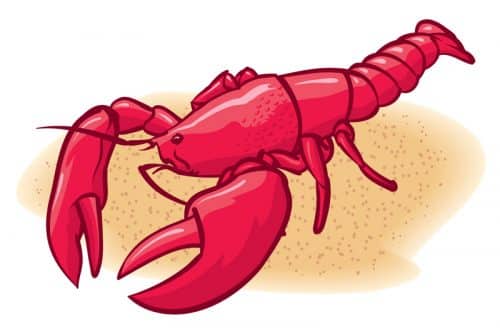In the eyes of lobsters, shrimps and crayfish, there are reflective lens structures on the outside of the eye that focus and direct infrared radiation to certain points on the retina. In this way, dim light in the natural environment is amplified, to improve vision. This ability, of focusing the light radiation, was a source of inspiration for the development of more efficient heat ovens

By: Yael Halfman Cohen
The lobster eye, consisting of reflective lens structures that direct and focus infrared radiation, inspired the development of more efficient heat spreaders.
On cold days, we all like to huddle around a source of heat, mobile or permanent - the main thing is that we are near it. But the energy efficiency of such heat stoves is not high, because the heat tends to rise up, even though the heat consumers are usually next to or below a hanging stove. It is clear that heating specific areas, and not spreading the heat throughout the space, will allow energy savings.
In the eyes of lobsters, shrimps and crayfish, there are reflective lens structures on the outside of the eye that focus and direct infrared radiation to certain points on the retina. In this way, dim light in the natural environment is amplified, to improve vision. This ability, of focusing the light radiation, was a source of inspiration for the development of more efficient heat ovens, based on IRLens technology. The lenses in the lobster eye direct the light towards the retina, while the oven directs the heat to the area below the heat source, instead of it being dispersed in space. The solution, based on the utilization of the radiation returns from the lens structures, allows the passage of about 85% of the radiation to the desired area, compared to 40% in other solutions, that is, a doubling of the efficiency.
The inventor and entrepreneur, Roger Johnson, who protected his invention by registering it as a patent, spent many hours as a child in the Amazon forest, observing and researching how "things" work in nature. He asked how nature makes shiny things like fish scales and cat eyes? In his adulthood, after studying for a degree in engineering, he returned to researching the shiny structures and delved mainly into the lobster eye. The company he founded, Radiant Optics, began commercializing the idea of lens structures focusing on heat oven technologies, and developed a product line of Hotzone ovens, based on electricity and gas. After several years of activity, he gave the franchise to use the technology exclusively to the company Schaefer Ventilation, to continue promoting and commercializing the technology.
So the next time you are standing under a sales counter and you feel hot, lift your head up, and look at the "lobster eyes" in the technological wonder.
